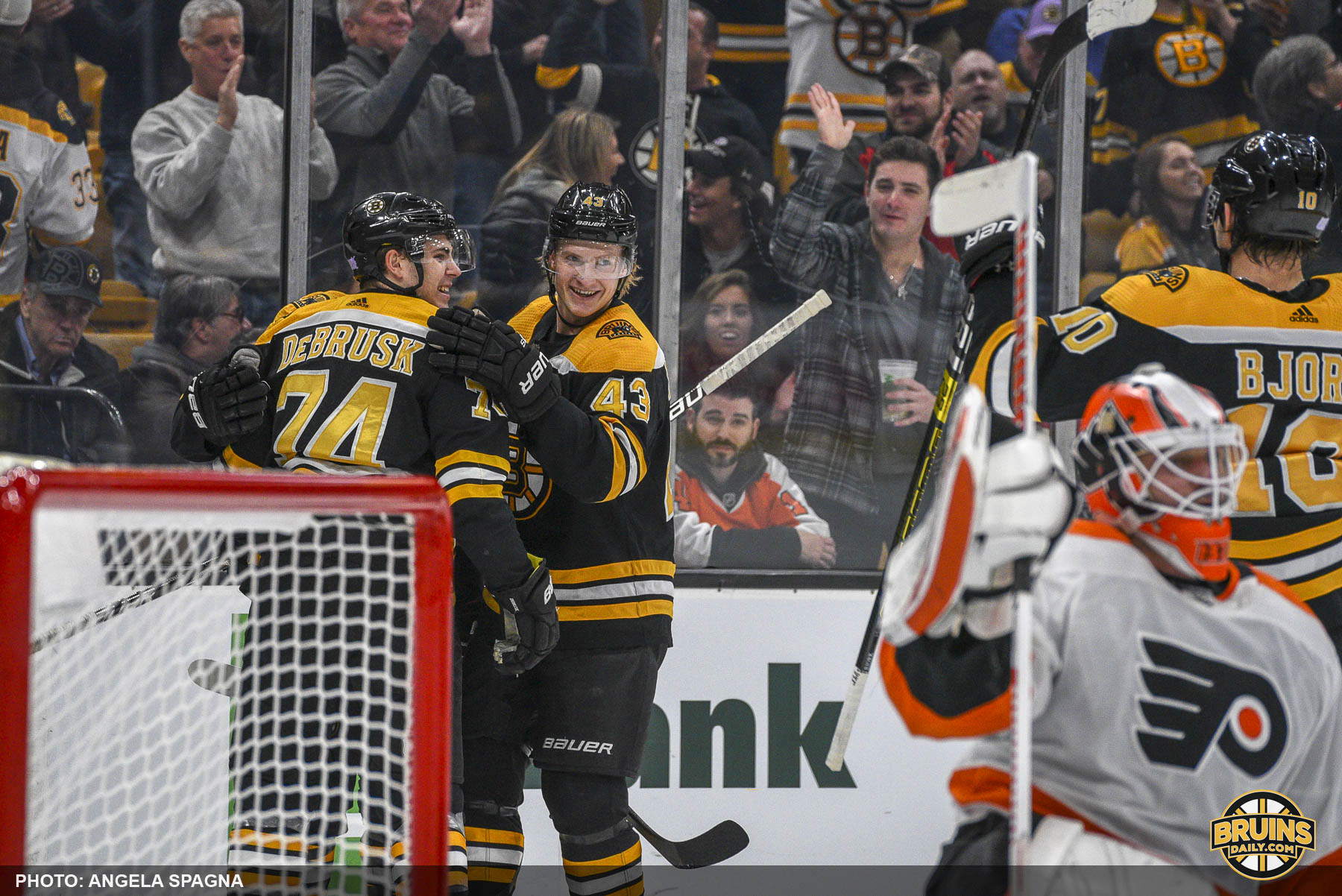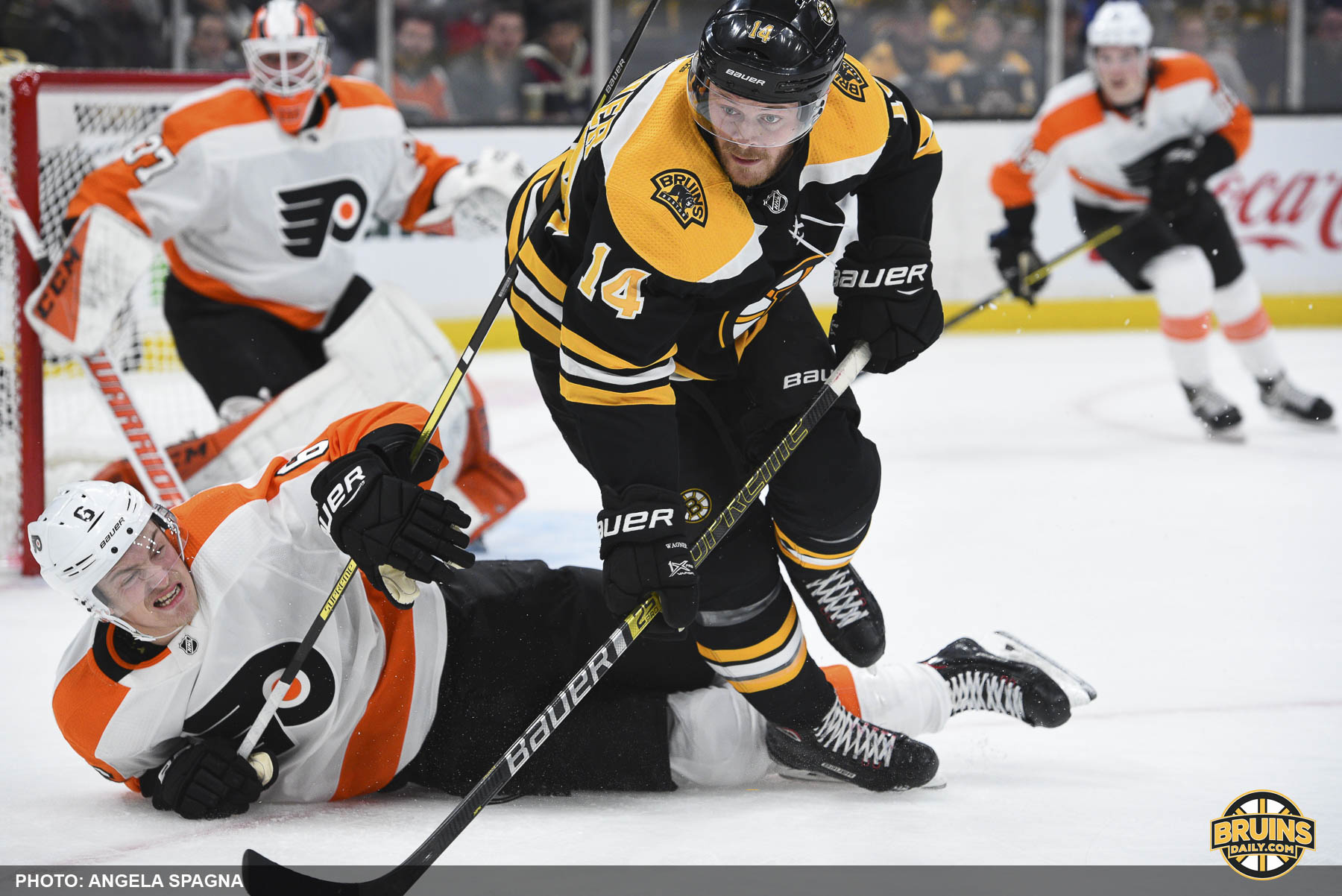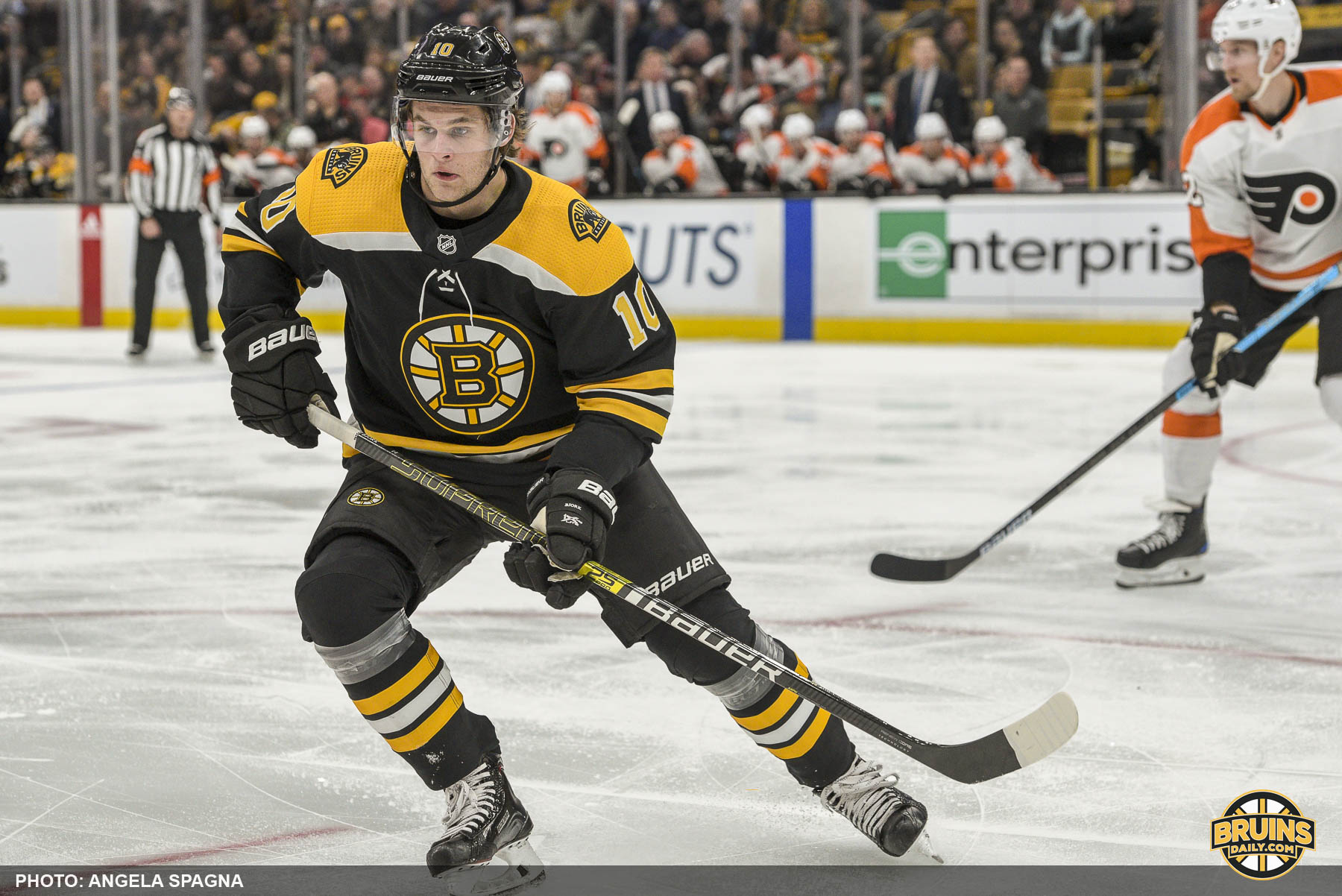What the Bruins lines would look like when breaking up the top trio
Share

Unlike his predecessor, Claude Julien, Bruce Cassidy isn’t afraid to shake things up when needed. From his goaltending tandem of Jaroslav Halak and Tuukka Rask to mixing and matching his lines and ‘D’ pairings in-game, the third-year Bruins coach is always looking for a spark.
Even if that means breaking up the potent top trio of Brad Marchand, Patrice Bergeron and David Pastrnak like he did during Boston’s 3-2 win over the Carolina Hurricanes Tuesday night. Even though Marchand (twice) and Pastrnak scored, the move paid off as the latter skated with David Krejci and Danton Heinen, while the former had a rotating line of partners on his off-wing with Bergeron.
Pastrnak returned to first line duty during Thursday’s practice at Warrior Ice Arena. The fifth-year standout could move back with Krejci at any moment.
We’ll put Pastrnak with Krejci on the second line for this exercise and give Marchand and Bergeron another partner. Let’s take a look at how the Bruins lines shape out under this accommodation. (We’re leaving Ryan Donato out after his assignment to Providence — for now.)
First line: Brad Marchand-Patrice Bergeron-Jake DeBrusk

Danton Heinen and Jake DeBrusk would benefit most if Bruce Cassidy breaks up the Bruins lines. (Angela Spagna/Bruins Daily)
Analysis: The well-known chemistry between Marchand and Bergeron is front and center with every game. No chance that Cassidy breaks them up now, or ever. After all 63+37=100.
That leaves one of Danton Heinen, Anders Bjork and Jake DeBrusk as the ideal three candidates at top line right wing.
Heinen saw time with Bergeron and Pastrnak as Marchand healed from injury last November. The highly-touted Bjork was a candidate to skate with Bergeron and Marchand to begin his rookie season. But we’re going to go with DeBrusk, who is getting more comfortable moving from left to right wing.
DeBrusk’s north-south skating style and willingness to go to retrieve pucks and go to the dirty areas are good compliments for the shifty Marchand and Bergeron’s two-way prowess. He’s developing into a top-six forward under Krejci. Skating with Marchand and Bergeron will only help DeBrusk develop into a well-rounded forward, much like Pastrnak has done over the past two seasons.
Second line: Danton Heinen-David Krejci-David Pastrnak

Moving David Pastrnak with David Krejci would give the Bruins a more well-rounded lineup. (Angela Spagna/Bruins Daily)
Analysis: This isn’t a consolation for Pastrnak, who gets to skate with his fellow countryman in Krejci while also getting top-six minutes. Moving Pastrnak allows Cassidy to dissect matchups even further to provide mismatches to the opposition.
The two crafty Czech’s get help with Heinen, who is a solid two-way option. The former University of Denver product is still looking for his first goal, but is developing a decent chemistry with Krejci and is playing well without the puck. Heinen’s production in all three zones would increase — both offensively and defensively — playing with Krejci and Pastrnak.
Third line: Anders Bjork-Joakim Nordstrom-David Backes
Analysis: Backes’ tenure in Boston is a roller coaster ride at best, especially given his $6 million cap hit. But the Bruins are better with him in the lineup than they are without him. The 34-year-old forward is best served in a bottom-six role, especially with his history of concussions and bumps and bruises.
Nordstrom’s versatility gives the Bruins another solid option on either the second, third or fourth lines. Bjork, meanwhile, is still trying to find his stride at the NHL level after an injury-plagued rookie campaign. Having two veterans would only help the former Notre Dame winger and Hobey Baker finalist.
Fourth line: Chris Wagner-Sean Kuraly-Noel Acciari

Bruins newcomer and Walpole native Chris Wagner is developing into a solid fourth liner. (Angela Spagna/Bruins Daily)
Analysis: No changes to the productive energy line here as Wagner, Kuraly and Acciari all bring a different dynamic. Their chemistry and effectiveness serve them well when going up against other checking lines.
Kuraly’s versatility makes him a decent third line option when needed, but it’s hard to break up this fourth line.










